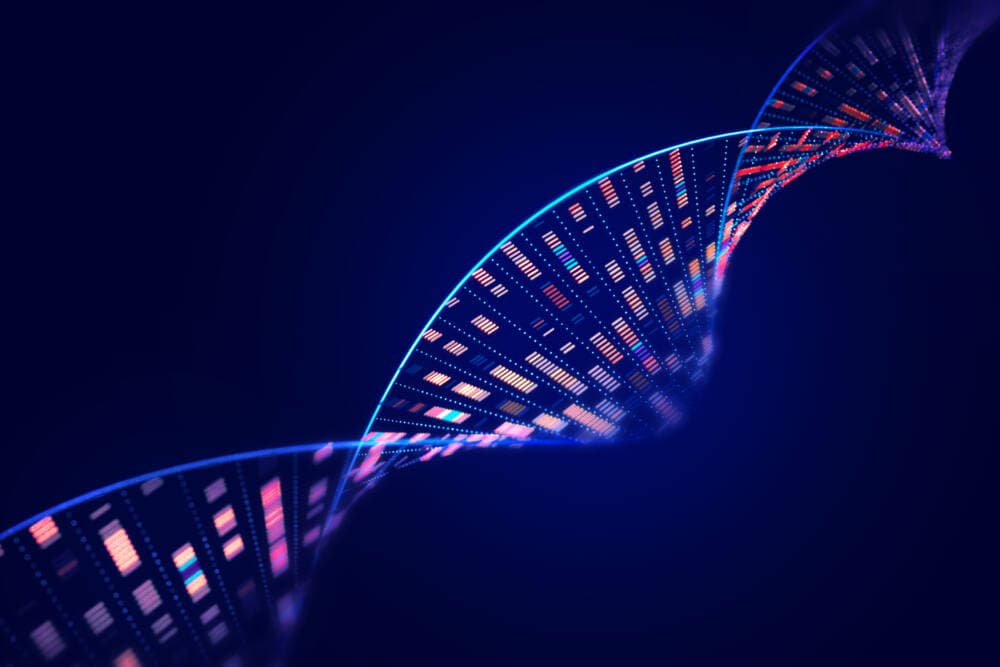Advertisement
Boston's Weekly Health Newsletter
Scientists studied the DNA of 240 different animals. Here are some of the quirkiest findings

Editor's Note: This is an excerpt from WBUR's weekly health newsletter, CommonHealth. If you like what you read and want it in your inbox, sign up here.
Imagine unraveling your DNA into one long strand. Now, imagine lining that up with 240 other long DNA strands — all from different types of mammals — to compare and contrast. That’s what an international team of scientists has been doing and, after years of work, they published a whole slew of papers in Science this past week.
Scientists believe this research could eventually lead to important insights about health and human disease.
I thought I’d share some of the quirkiest and coolest takeaways from this huge undertaking, called the Zoonomia Project.
But first, a quick word about how the scientists did their work.
So, we know that DNA randomly mutates. For this project, the team lined up the genomes of different mammals, and looked at the segments of DNA that have changed very little over time — and the ones that have changed surprisingly fast.
For those parts of the genome that haven’t changed much, that’s an indication that the underlying genes are doing something really important. That part of the DNA is somehow critical to the mammal’s survival. These regions — which the authors of the studies refer to as “functionally constrained” — make up about 10% of the human genome.
For the parts of the genome with so-called “accelerated” change, scientists think they are often linked to helping a mammal adapt to a new environment.
“One of the really cool things about mammals is that, at this point in time, they’ve basically adapted to survive in nearly every single ecosystem on earth,” said Elinor Karlsson, director of the Vertebrate Genomics Group at the Broad Institute of MIT and Harvard, who helped lead Zoonomia. “And so actually finding what’s underlying those adaptations will be really cool.”
Okay, now on to those quirky and cool findings.
- Predicting extinction. By looking at the DNA of an individual mammal, scientists are able to measure certain things about the history of an entire species. They can estimate how large the population was 10,000 years ago and how big the population is now. They can measure how inbred the animal is. By taking a number of measurements and feeding them all into a computer, the scientists also can predict how likely it is that a species will risk extinction. It’s not perfect, but it’s a great tool for scientists to know where to prioritize their efforts. Two species that came up as at risk of extinction: the orca and the mouse-deer (which is not actually related to the mouse or the deer but is mighty cute).
- Questioning dog’s noses. We’ve all heard that dogs have great sniffers, but the Zoonomia Project questions that wisdom. Apparently, they are about average. Elephants, perhaps predictably, come in first place. But, Karlsson said, the fourth place caught everyone by surprise: It was “a weird little South American rodent that nobody seems to know very much about that has a huge number of olfactory genes and receptors.” It’s called the Central American Agouti.
- Appreciating bats. Karlsson came away from the research particularly impressed with bats. “Bats are amazing. Such an incredible class of species. They’ve got a huge amount of diversity. There are more species of bats than any other order of mammals, other than rodents,” she said. In general, the smaller the mammal, the shorter the lifespan — but bats challenge that. There’s one type of bat that’s the size of a mouse, yet it lives about 40 years. Karlsson speculates the ability to fly might have something to do with its longevity. How their immune system tolerates viruses also wowed Karlsson. (Other research has suggested a secret of their immune system’s success is its ability to limit inflammation.) Since only a few types of bat will tolerate captivity, many of the bat samples for this project came from people going into the wild to catch a bat and get a sample.
For all the discoveries and advances, Karlsson said, there is a lot more analysis to do. “As a field, genomics has gotten very good at making data and not very good at figuring out what to do with its data,” she said. Hopefully, as scientists gain a better understanding of the data, they’ll be able to report more quirky and important discoveries in the years to come.
